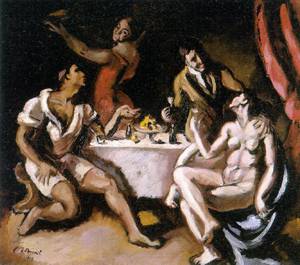 My roots are in Prague. Not my real hereditary-type roots — they lie somewhere in Lithuania, in some long-forgotten shtetl in the Pale of Settlement.
My roots are in Prague. Not my real hereditary-type roots — they lie somewhere in Lithuania, in some long-forgotten shtetl in the Pale of Settlement.
I’m talking about my cultural roots, my identity as a bohemian, or in the current vernacular, a boho. The bohemian movement started in Prague, or at least was perfected there. Also, Prague is the capital of Bohemia, which is an historical region that takes up about two-thirds of the current Czech Republic. So, Prague is Bohemian and bohemian. Around 1912, Franz Kafka met a Yiddish-Theater actor named Isaac Löwy, who introduced him into a world of writers, artists, thinkers, physicists and anarchists.
They hung out in bars or in Berta Fanta’s salon – upstairs from her husband’s pharmacy; they drank absinthe, they had sex with actresses (I’m sure they did; I don’t have historical data at my fingertips, but believe me, they did); they stayed up all night and talked about Expressionism and Modern Music; they discussed the ideas of Einstein and Freud, who were both kicking up their heels around this time.

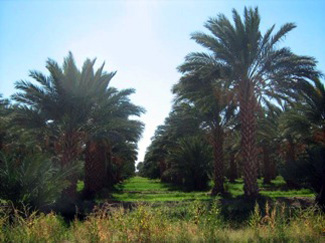 A couple of weekends ago, Martin and I headed out to Joshua Tree for a quick camp-out. Fall in the National park is spectacular. We enjoyed bouldering, dominoes, wine and beans by the campfire, a starry slumber, early morning coffee in our enamel-ware mugs and a wonderful hike to an Oasis.
A couple of weekends ago, Martin and I headed out to Joshua Tree for a quick camp-out. Fall in the National park is spectacular. We enjoyed bouldering, dominoes, wine and beans by the campfire, a starry slumber, early morning coffee in our enamel-ware mugs and a wonderful hike to an Oasis.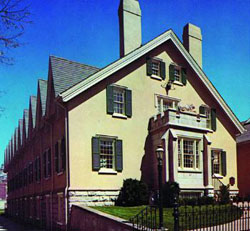 Food is the epicenter of Mormon culture, which makes it seem like people rarely show up at church events – well, any event – without the expectation of noshing. No food is virtually a mortal sin punishable by social chastisement and tantamount to cultural anarchy. And while much of the layperson Mormon culinary lexicon consists of potentially disastrous gastronomic experiments and everything- but- the- kitchen- sink casseroles, the Lion House in Salt Lake City's Temple Square stands as the pillar of Mormon cuisine, our Le Cordon Bleu, if you will.
Food is the epicenter of Mormon culture, which makes it seem like people rarely show up at church events – well, any event – without the expectation of noshing. No food is virtually a mortal sin punishable by social chastisement and tantamount to cultural anarchy. And while much of the layperson Mormon culinary lexicon consists of potentially disastrous gastronomic experiments and everything- but- the- kitchen- sink casseroles, the Lion House in Salt Lake City's Temple Square stands as the pillar of Mormon cuisine, our Le Cordon Bleu, if you will.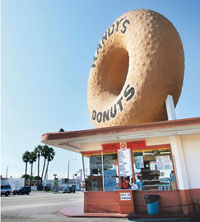 Every culture has fried dough--German Berliners, Italian zeppole, French beignets, and Indian balushahi--but none can top the gut-busting pleasure of the American donut. It's the latest iconic food to undergo a renaissance; here are our picks for the best classic and newfangled donut purveyors across the country.
Every culture has fried dough--German Berliners, Italian zeppole, French beignets, and Indian balushahi--but none can top the gut-busting pleasure of the American donut. It's the latest iconic food to undergo a renaissance; here are our picks for the best classic and newfangled donut purveyors across the country. 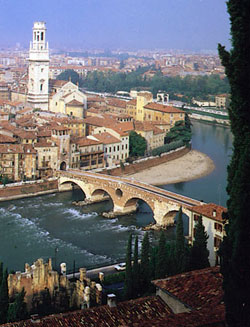 I did it for you, dear reader. I did it all for you. I did something
I vowed I would never do. Not in a million years. But there I was in
Verona. City of Romeo and Juliet. City of beauty. And after seeing so
many beautiful things, one does get a bit peckish. And all the
guidebooks recommended the same thing: horse. It’s a specialty of the
area. So when Jim and I found ourselves at the local restaurant
perusing the menu, there it was, staring us in the face: smoked horse
with arugala salad. There was also pasta with a donkey ragú on the menu
like it was the most normal thing in the world to eat these equines. “
I guess we had better try it,” said Jim. “Really?” “Yeah. How bad can
it be?” He said nonchalantly. I could sense a challenge. “OK, go ahead
order it.” “Ok, I will,” he countered, adding, “and we’ll share it.” I
took a large gulp of my prosecco and waited anxiously for the dish to
arrive.
I did it for you, dear reader. I did it all for you. I did something
I vowed I would never do. Not in a million years. But there I was in
Verona. City of Romeo and Juliet. City of beauty. And after seeing so
many beautiful things, one does get a bit peckish. And all the
guidebooks recommended the same thing: horse. It’s a specialty of the
area. So when Jim and I found ourselves at the local restaurant
perusing the menu, there it was, staring us in the face: smoked horse
with arugala salad. There was also pasta with a donkey ragú on the menu
like it was the most normal thing in the world to eat these equines. “
I guess we had better try it,” said Jim. “Really?” “Yeah. How bad can
it be?” He said nonchalantly. I could sense a challenge. “OK, go ahead
order it.” “Ok, I will,” he countered, adding, “and we’ll share it.” I
took a large gulp of my prosecco and waited anxiously for the dish to
arrive.

